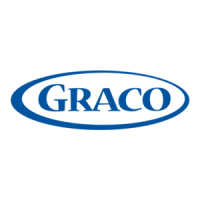6 308736
Operation
Pressure Relief Procedure
WARNING
INJECTION HAZARD
System pressure must be manually
relieved to prevent system from starting
or spraying accidentally. Fluid under high
pressure can be injected through skin and cause
serious injury. To reduce risk of injury from injec-
tion, splashing fluid, or moving parts, follow Pres-
sure Relief Procedure whenever you:
D are instructed to relieve pressure,
D stop spraying for more than 10 minutes,
D check or service system equipment,
D install or clean spray nozzle.
Pressure Relief Procedure
1. Engage trigger safety latch.
2. Turn sprayer off.
3. Remove ignition cable from spark plug.
4. Remove siphon tube from water supply.
5. Disengage trigger safety latch and trigger gun to
relieve pressure. Engage trigger safety latch.
6. If spray tip or hose is completely clogged, or
pressure has not been fully relieved after following
steps above: Disengage trigger safety latch and
trigger gun to relieve pressure. Wrap rag around
hose end coupling and VERY SLOWLY loosen
coupling to relieve pressure gradually, then loosen
completely. Now clear tip or hose.
Startup
Always use start–up procedure to ensure that unit is
started safely and properly.
1. Check oil level:
NOTE: All units are equipped with a low-oil sensor that
shuts engine off if oil level falls below a certain
level. If unit stops unexpectedly , check both oil
and fuel levels. Check oil level each time unit is
refueled.
2. Check fuel level.
WARNING
FIRE HAZARD
Do not refuel a hot engine. Refueling a
hot engine could cause a fire. Use only
fresh, clean regular or unleaded gaso-
line. Close fuel shutoff valve during refueling.
CAUTION
Never run unit dry. Costly damage to pump will
result. Always be sure water supply is sufficient
before operating.
3. Put siphon tube in water supply. For best perfor-
mance, place siphon tube and water source at the
same or higher level than pressure washer.

